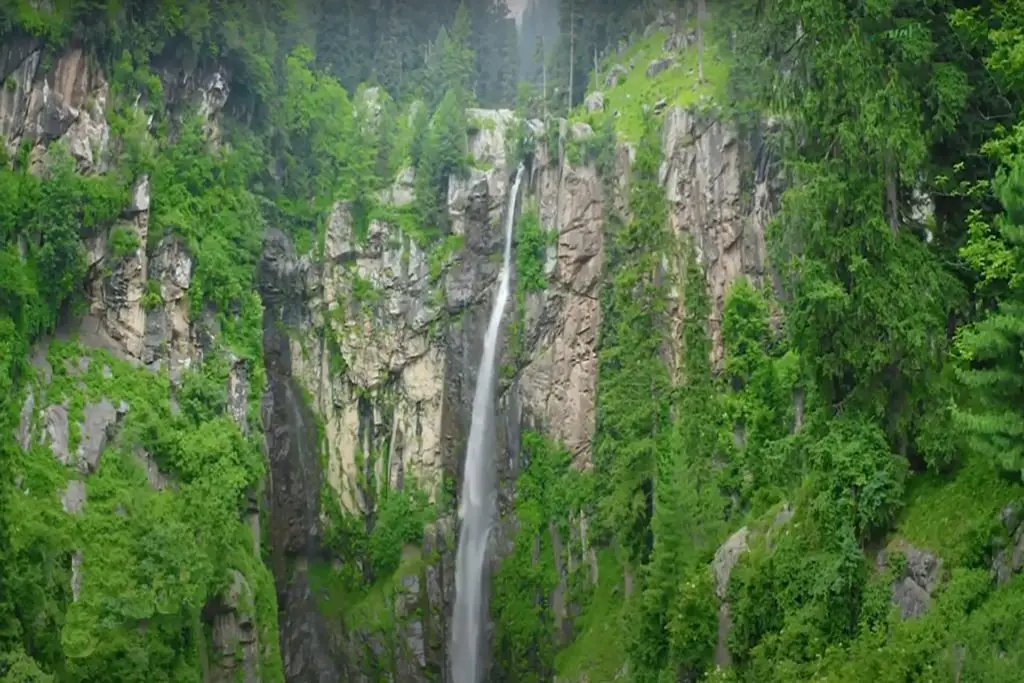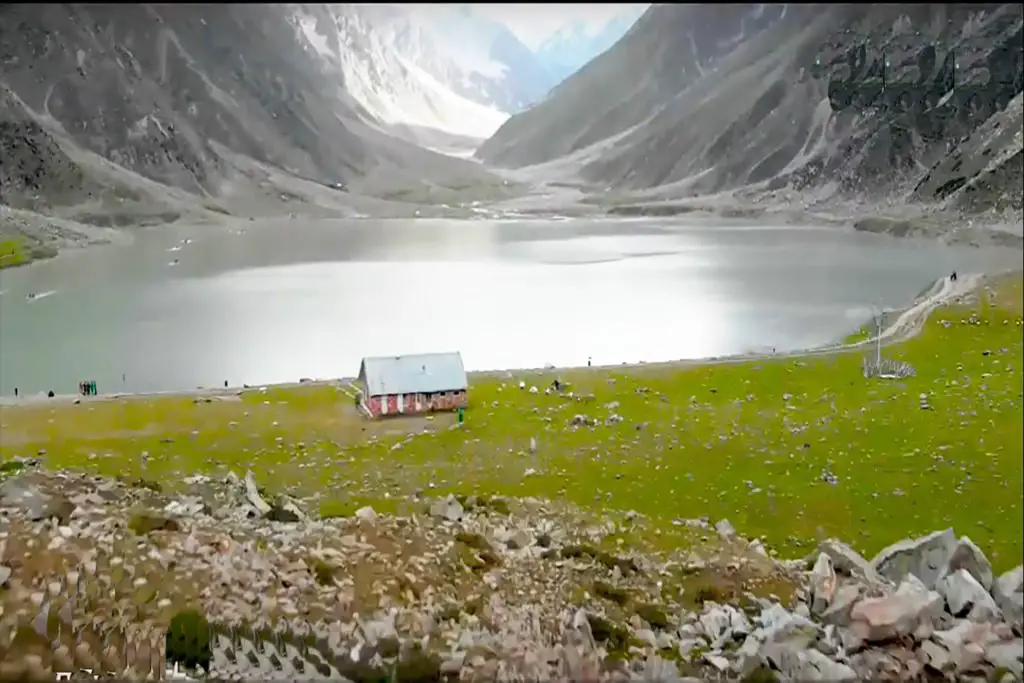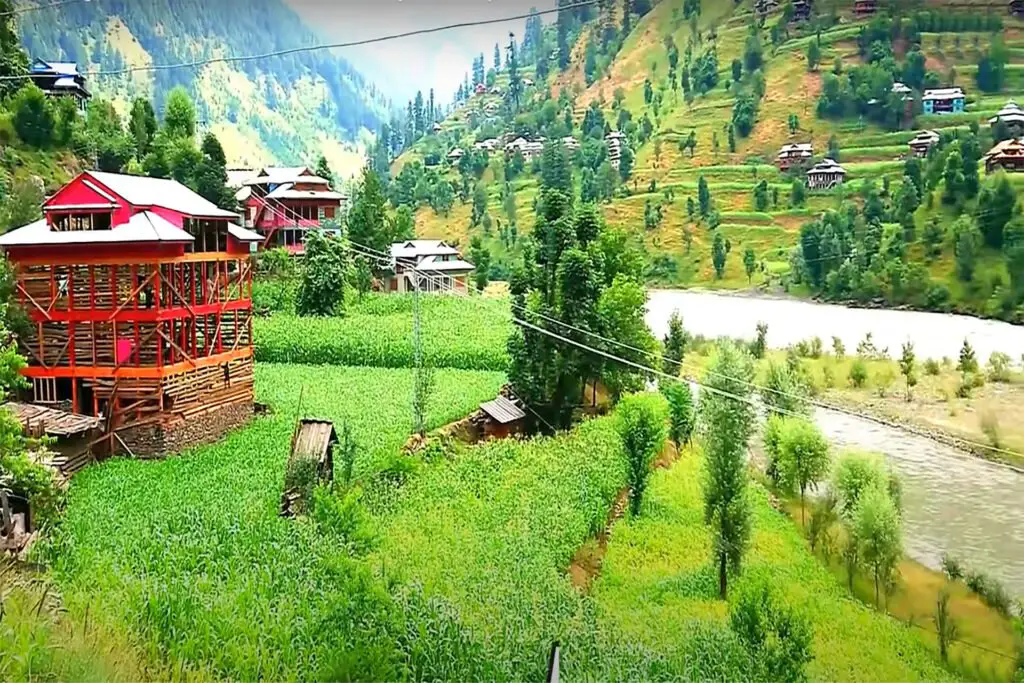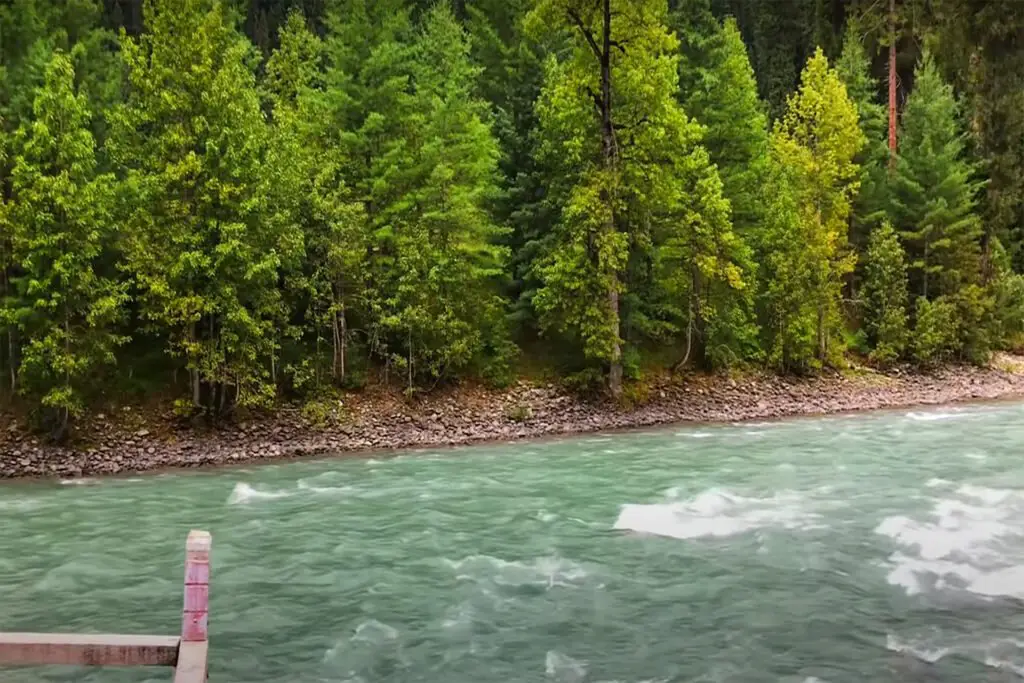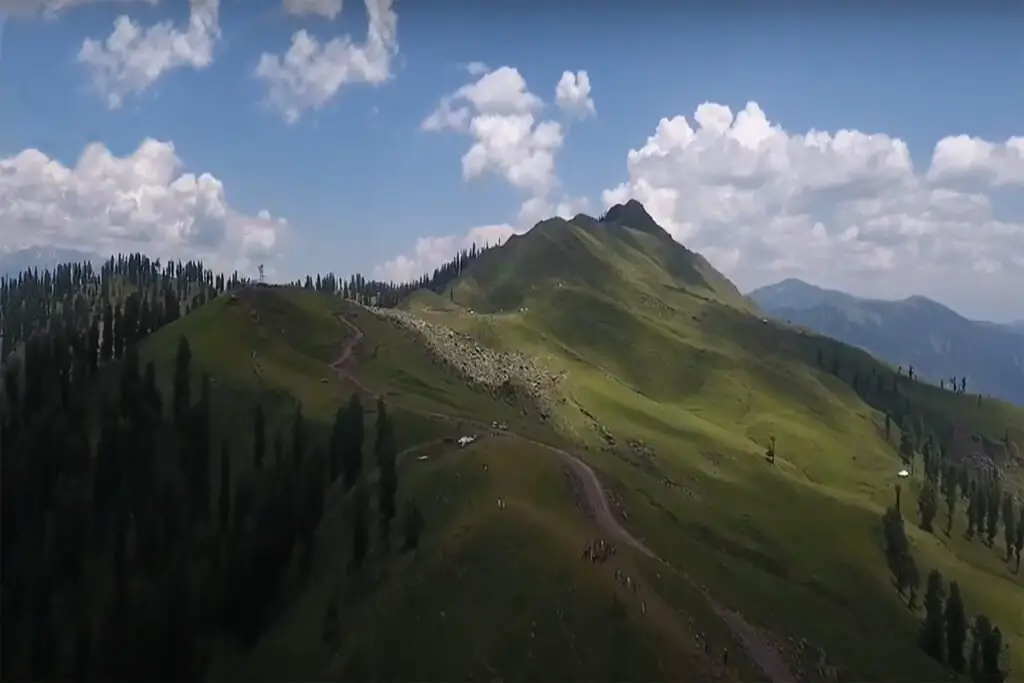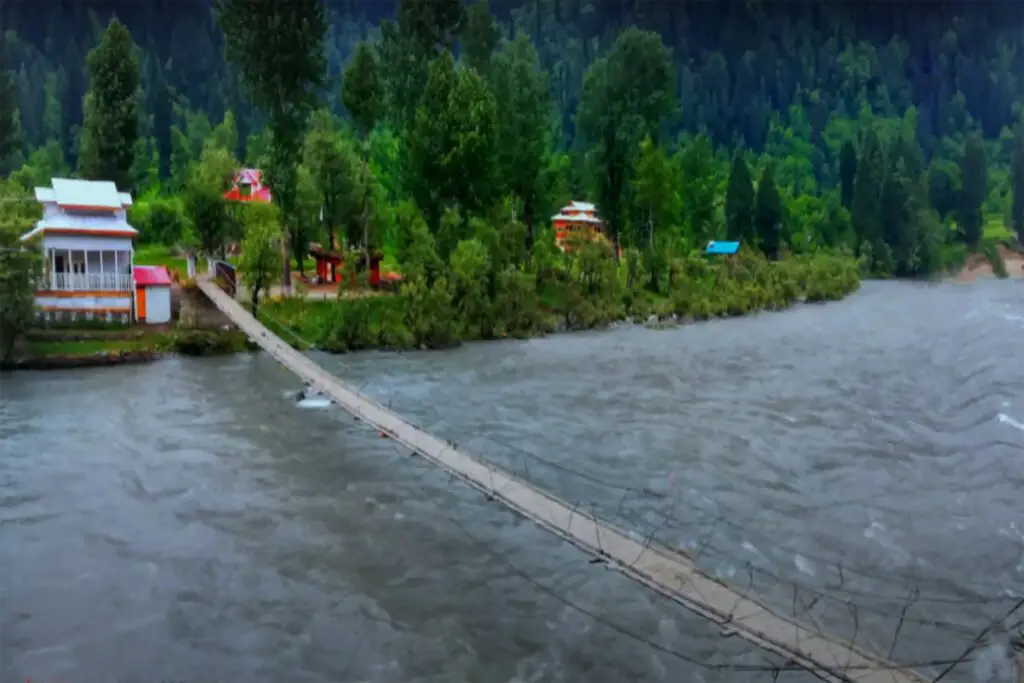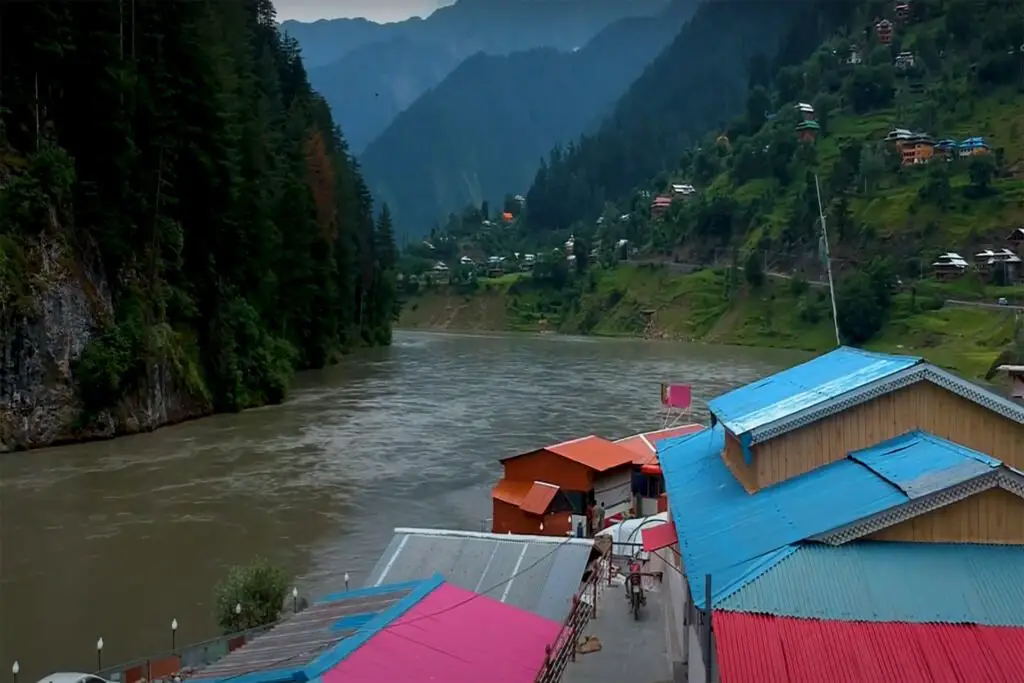Nestled in the heart of the Matta region of Swat, Jarogo Banda Waterfall remains a concealed gem within the district’s dense western forest. Situated along the route to Fazal Banda and Biha, this hidden tourist attraction offers a verdant oasis ensconced by towering mountains and lush, untouched woodlands.
Location of Jarogo Banda Waterfall
Located at a distance of approximately 30 kilometers from Matta and 54 kilometers from Mingora, Jarogo Banda Waterfall remains a well-kept secret, often eluding the casual tourist’s attention in the Swat Valley. This hidden paradise boasts lush meadows, enigmatic forests, snow-draped peaks, invigorating mineral springs, and lofty summits, making it a haven for those who venture to explore its enchanting landscapes.
Height of Jarogo Waterfall, Matta
Sitting at an elevation of 6,600 feet above sea level, this waterfall stands as an ideal summer retreat, offering respite from the sweltering heat. Abundant in medicinal flora, this region within the Swat Valley is frequently chosen by researchers as a prime location for their studies.
The Jarogo Waterfall, a magnificent natural spectacle, descends from a height of around 45 feet. Enveloped by luxuriant green landscapes and craggy mountains, it provides a breathtaking panorama. The melodious rush of the cascading water, coupled with the refreshing breeze, crafts a picturesque ambiance that will leave you utterly captivated.
Meaning of Jarogo
The word Jarogo means broom in Pashto, but its history dates back to the antiquity of the Hindu Shahi period in Swat. There lived a Hindu woman named Jarogai who was widely known and respected in the surrounding areas, so people named the area and the waterfall after her.
Route to Jarogo Valley
The Jarogo Valley region is intimately linked to the picturesque Village of Fazal Banda, situated to the north of the area. This charming village acts as the gateway to the Jarogo Valley and is the first stop along the road before reaching Jarogo Valley. To access the Chatekal Valley, which is approximately 5 kilometers away from Fazal Banda, visitors often opt for all-terrain vehicles (ATVs).
A short 20-minute ride on four-wheelers takes you to Chatekal, where a footpath begins. This path leads to the next destination: Yagg Bela, situated on the route to Jorogo. It splits into two distinct trails. One of these trails guides you to the Jarogo waterfall, which boasts the distinction of being the highest waterfall in Pakistan. The other path leads directly to the enchanting meadows of Jarogo Valley.
The journey to the Jarogo waterfall along the first trail typically takes around one hour to complete without breaks. On the other hand, the alternative route leading to Jarogo Valley’s meadows can be covered in approximately 1.5 hours without any interruptions.
Fazal Banda and Biha Valley are nestled in the western headwaters of Matta Tehsil in Swat Valley. This serene region is located at a distance of 48 kilometers from the district headquarters, Saidu Sharif. It is renowned for its lush green landscapes, dense forests, alpine pastures, and experiences heavy snowfall during the winter season.
Tourist Attractions at Jarogo, Swat
In addition to savoring the splendor of the waterfall, Jarogo Waterfall offers a range of activities for visitors to partake in. You can immerse yourself in the natural pool formed by the waterfall and relish a refreshing swim in the cool, crystalline waters.
For those with an adventurous spirit, there are hiking trails that lead to the waterfall, promising an exhilarating experience and a chance to explore the surrounding landscapes. Nature enthusiasts can also engage in birdwatching, as the lush forests in the vicinity provide a habitat for a diverse array of bird species, making it an ideal spot for birdwatching.
In the vicinity of Biha Valley, an exceptional trout hatchery can be found along the route towards Doghalgay. This hatchery specializes in a unique species of trout, namely the brown trout.
While Biha Valley stands out as an exceptionally scenic destination in Swat Valley, it remains shrouded in obscurity and is far more beautiful than the usual tourist spots. This obscurity can be attributed to the negligence of higher authorities and the absence of a properly developed connecting road.
The region boasts significant tourist potential, yet it requires substantial development. Such development would not only usher in new opportunities for visitors, but also offer substantial economic advantages to the local community.
Despite its remote location, Jarogo Waterfall offers a range of visitor amenities. Local shops in the vicinity provide snacks, water, and souvenirs for purchase. Additionally, you’ll find convenient restroom facilities and parking areas nearby for your comfort.
To ensure a pleasant visit, it’s recommended that you wear comfortable footwear, as well as bring a change of clothes. This will come in handy, especially if you plan to take a dip in the natural pool, as you may get wet during your aquatic adventure.
Best Time to Visit Jarogo Waterfall
The best time to explore the waterfall is during the monsoon season, which typically spans from July to September. During these months, the water flow is at its zenith, and the verdant surroundings are at their lushest. Nevertheless, it’s worth noting that the waterfall remains accessible year-round, and each season imparts its own unique allure to this natural wonder.
Jarogo Waterfall Hiking
The journey from Biha to the trailhead for the Jarogo waterfall typically takes around 1-2 hours. As you approach the entrance, you’ll easily spot it due to the colorful flags and a small restaurant nearby. However, be aware that due to ongoing road construction between Biha and Jarogo, you might need to walk a bit further to reach the trailhead.
Once you’ve started your hike from the Jarogo Falls entrance, the stream will serve as your guiding companion. The hike to the waterfall itself takes approximately an hour. Be prepared to get your feet wet, as there are several points along the trail where you’ll need to hop across rocks to cross the river.
As you near the end of your hour-long hike, the thunderous sound of the cascading river will grow louder, signaling your approach to the waterfall. The journey to reach Jarogo waterfall may involve various modes of transportation, including van rides, clinging to the back of a truck, and finally, a short walk. However, the captivating view of the Jarogo waterfall makes the adventurous trek entirely worthwhile.
The lush surroundings, towering trees, colossal boulders, and moss-covered cliffs create an atmosphere reminiscent of scenes from Jurassic Park. During the summer months, you’re likely to encounter more hikers exploring the rocks near the waterfall overlook. However, in the fall, you’ll find that you practically have the entire Jarogo Falls all to yourself.
Regrettably, if you plan to return to Mingora in a single day, your time to fully savor the beauty of the rushing water will be limited. If you embark on your hike around 3:00 PM, you can catch one of the last buses from Biha to Matta. For those with a strong affinity for the outdoors, there’s a meadow at the top of Jarogo Falls where many locals camp overnight.
Traveling to Jarogo Waterfall using public transport can be challenging. With waiting times and several transfers, the journey to this remote area in the Swat Valley can be quite demanding for a single-day trip. However, for those who appreciate the journey as much as the destination, a visit to Jarogo Falls is certain to become one of your most cherished memories of Pakistan.

